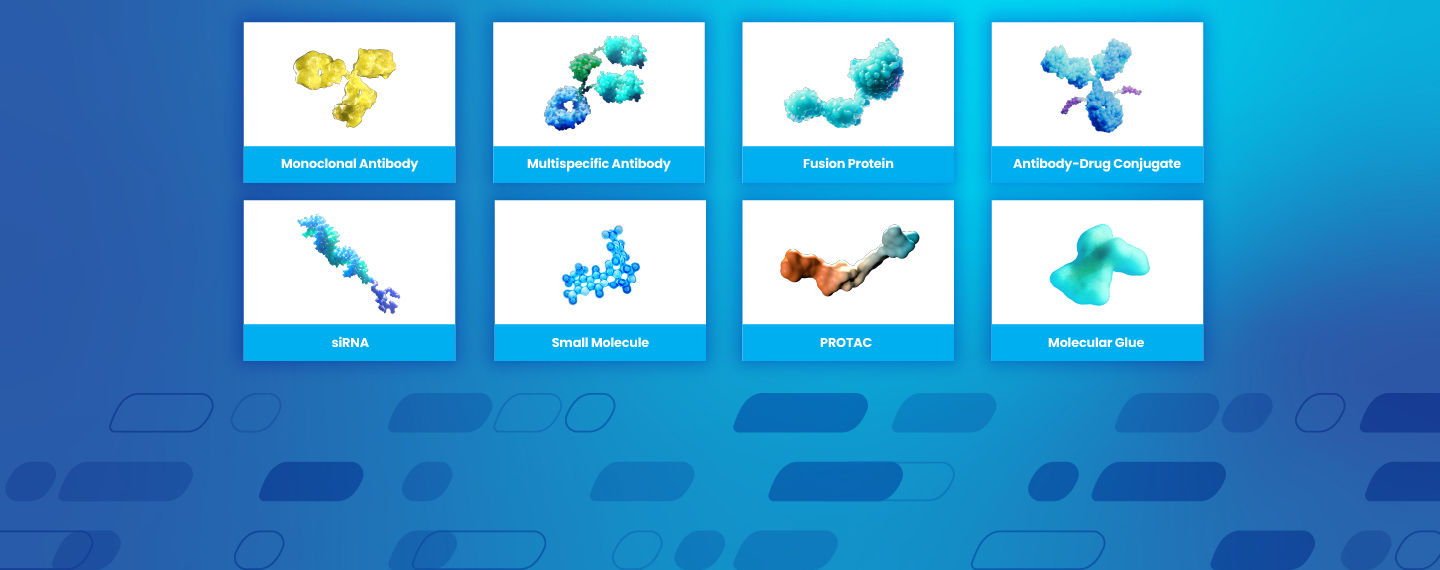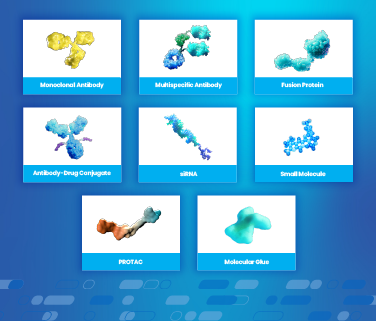Nature has long held the blueprint for the next generation of medicines. Amgen is inspired by nature's building blocks – proteins, peptides and RNA – to design and invent innovative therapies that mirror, enhance or redirect mechanisms that occur in nature. From designed-from-scratch small molecules that bind some of the toughest targets inside cells, to antibodies that bind to cell surface molecules and induce immune responses, and molecules that aid in cellular clean-up, Amgen's drug modalities tackle disease with remarkable versatility.
A Toolkit Built from Biology
Amgen's toolkit of modalities encompasses molecules that are inspired by nature's processes. This toolkit has the potential to treat some of the world's most challenging diseases and includes:
- Monoclonal antibodies: These Y-shaped large molecules are engineered to precisely target specific antigens associated with disease.
- Multispecific antibodies: These advanced antibodies can bind to two or more targets and act on a specific cell type or create a new biological function, for example enabling a targeted immune response to complex diseases.
- Non-antibody fusion proteins: These are proteins that combine naturally occurring domains to improve stability, duration or therapeutic function.
- Antibody-drug conjugates (ADCs): These molecules are built on antibody structures. They have potent therapeutic payloads attached to the antibodies that are delivered directly to cells that contain the antibody's target, mimicking nature's precise targeting methods.
- Small interfering RNA (siRNA): Borrowing from a natural gene-silencing pathway, siRNA therapies inhibit production of disease-driving proteins at the source – by targeting their genetic instructions.
- Small molecules: These compact, synthetically derived and optimized compounds penetrate cells to modulate targets inside those cells - often in places larger protein-based therapeutics cannot reach.
- Induced proximity molecules: These molecules are designed to harness natural regulatory mechanisms by bringing biological components together in new ways, such as leveraging the body's protein degradation machinery to eliminate harmful proteins.
Each modality reflects Amgen's respect for nature's elegant designs, re-invented by scientific teams to overcome the challenges in developing effective treatments for patients.
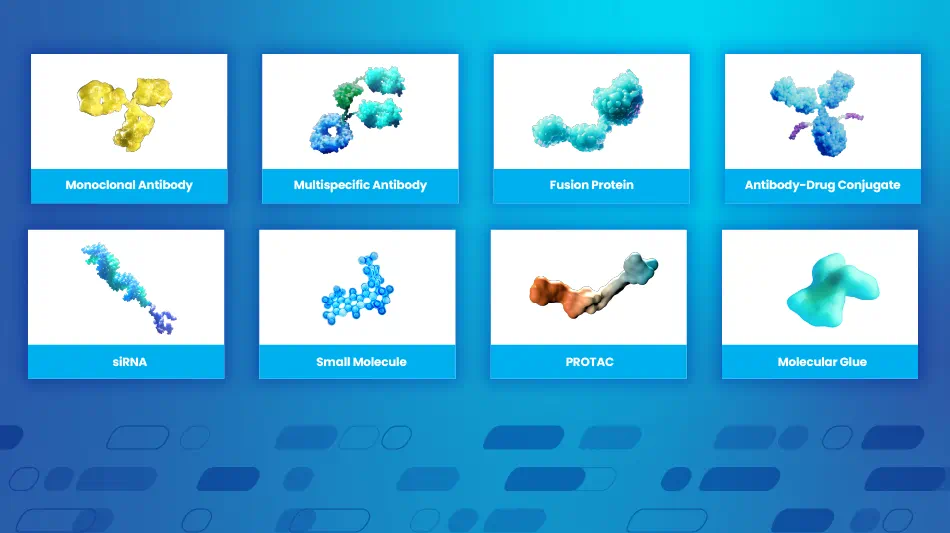
Amgen's toolkit of modalities reflects biology's diversity – from naturally occurring proteins and peptides to engineered multispecific and small molecules, as well as RNA-based therapeutics.
Monoclonal Antibodies
Traditional monoclonal antibodies (mAbs) are Y-shaped proteins. These molecules are designed with pinpoint accuracy to bind proteins associated with disease.
Each mAb includes Fab and Fc regions:
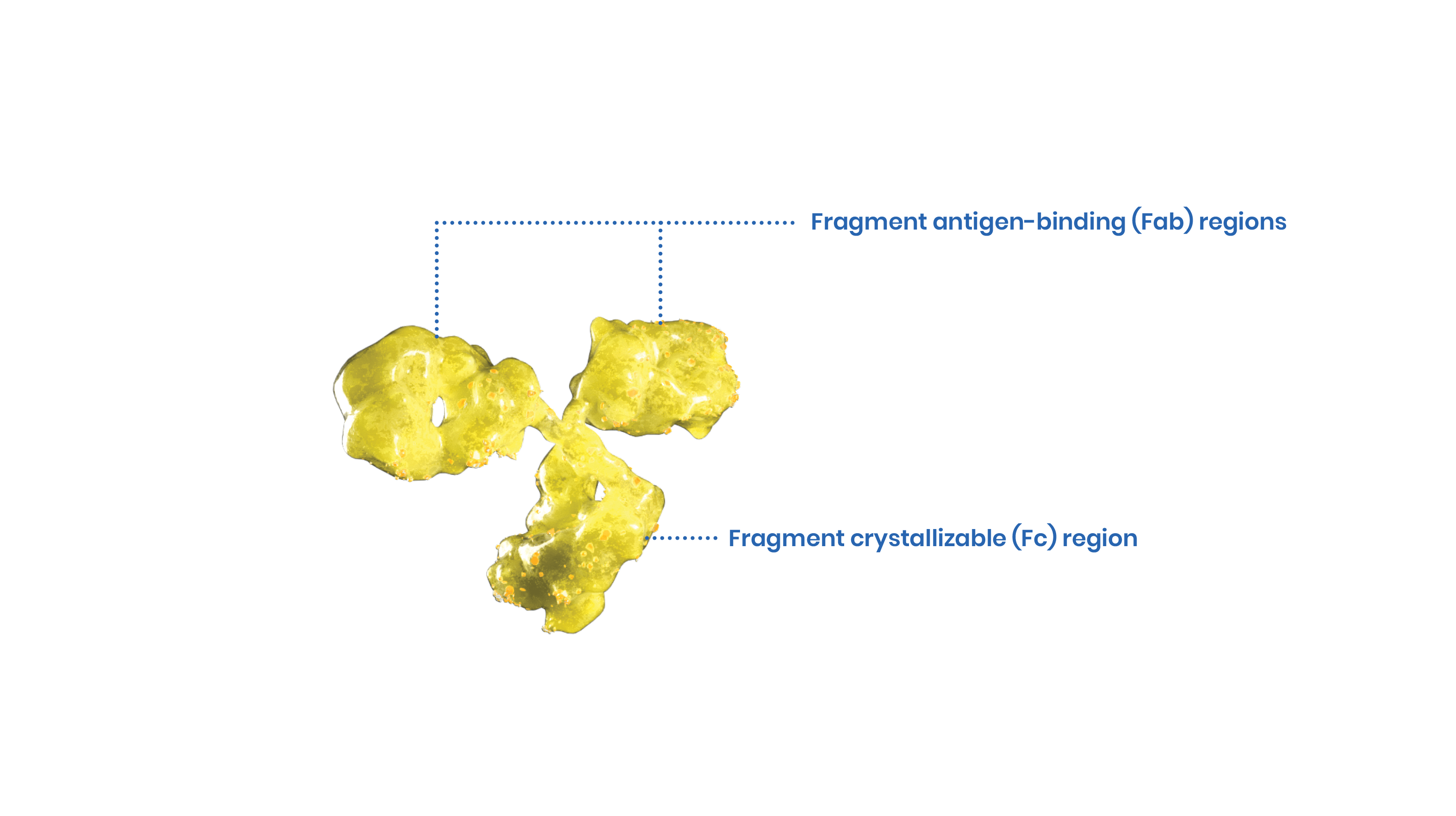
Monoclonal antibodies contain Fab (fragment antigen-binding) regions that selectively bind to antigens and a Fc (fragment crystallizable) region that can recruit immune system components to eliminate flagged targets.
Some therapeutic mAbs are designed to block or activate biological processes by binding to a specific antigen, some engage the body's immune defenses to attack and eliminate diseased cells, and some do both.
Multispecific Antibodies
Multispecific antibodies are engineered proteins capable of binding to two or more distinct targets, enabling new ways to disrupt disease. They can also be designed to provide new functions or to localize activity to a specific cell type.
An example of a multispecific antibody is a T-cell engager.
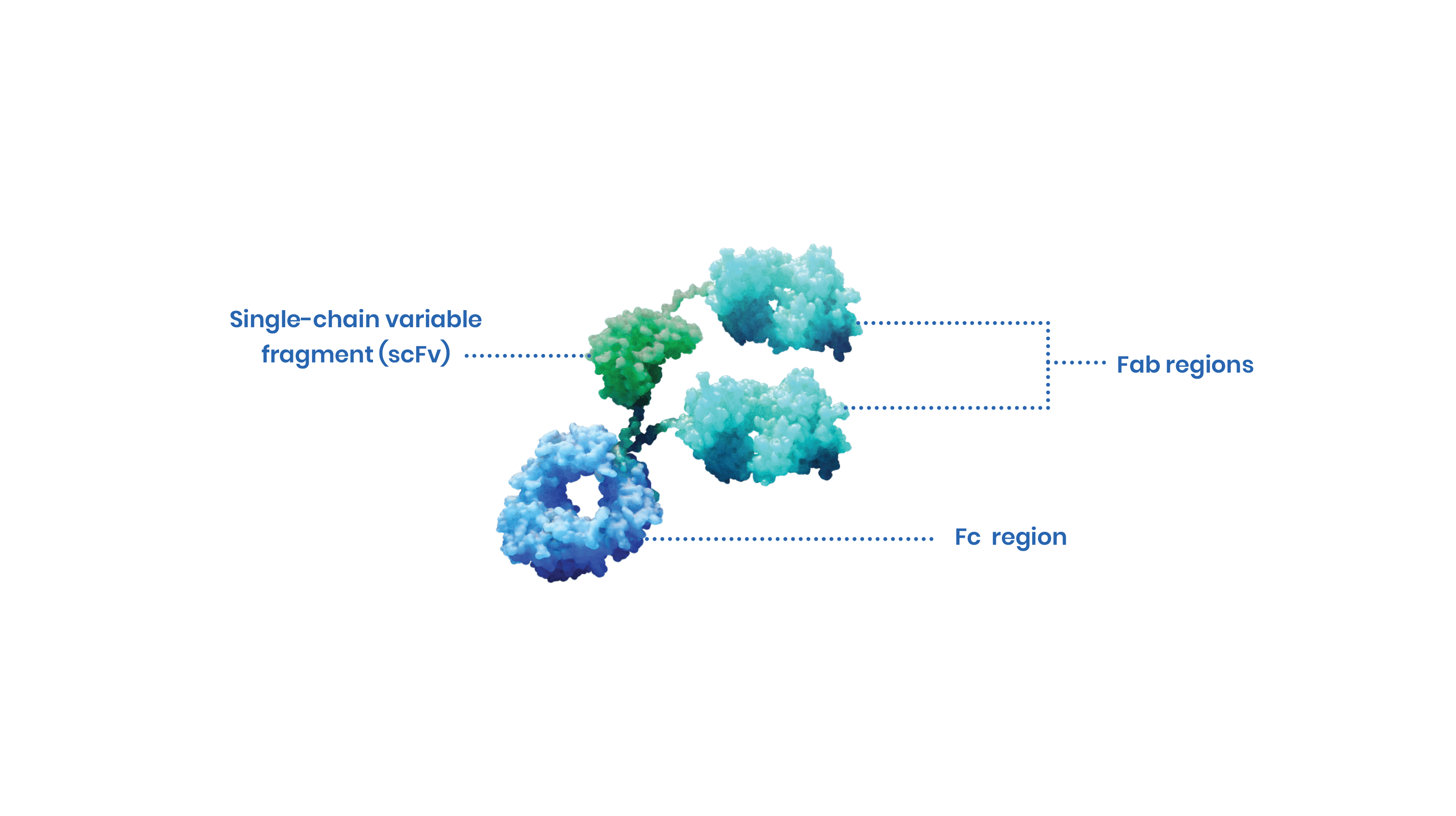
This multispecific antibody has an scFv (single-chain variable fragment) that targets cell surface markers, Fab regions that target specific cells and a modified Fc region to enhance performance.
These molecules are a unique class of immunotherapies that bring cancer-fighting T cells into close contact with tumor cells, activating a direct, targeted immune attack.
Each molecule is designed to bind to both T cells and tumor-specific antigens on tumor cells. This brings the T cell together with the tumor cell so that a bridge forms, leading the T cell to release enzymes that destroy the cancer cell.
Amgen has advanced multiple T-cell engager formats, including Bispecific T-cell Engager, or BiTE® molecules, Half-Life Extended, or HLE BiTE molecules, which are designed to remain in the body longer before being eliminated and BiTE molecules that bind to two antigens on tumor cells simultaneously, in addition to binding to T cells.
Non-Antibody Fusion Proteins
Non-antibody fusion proteins are designed by combining different natural protein domains to create innovative therapies with tailored properties. A common strategy involves fusing a protein to the antibody's Fc (fragment crystallizable) region that recruits immune cells.
Each fusion protein typically includes an Fc antibody region and a protein domain:
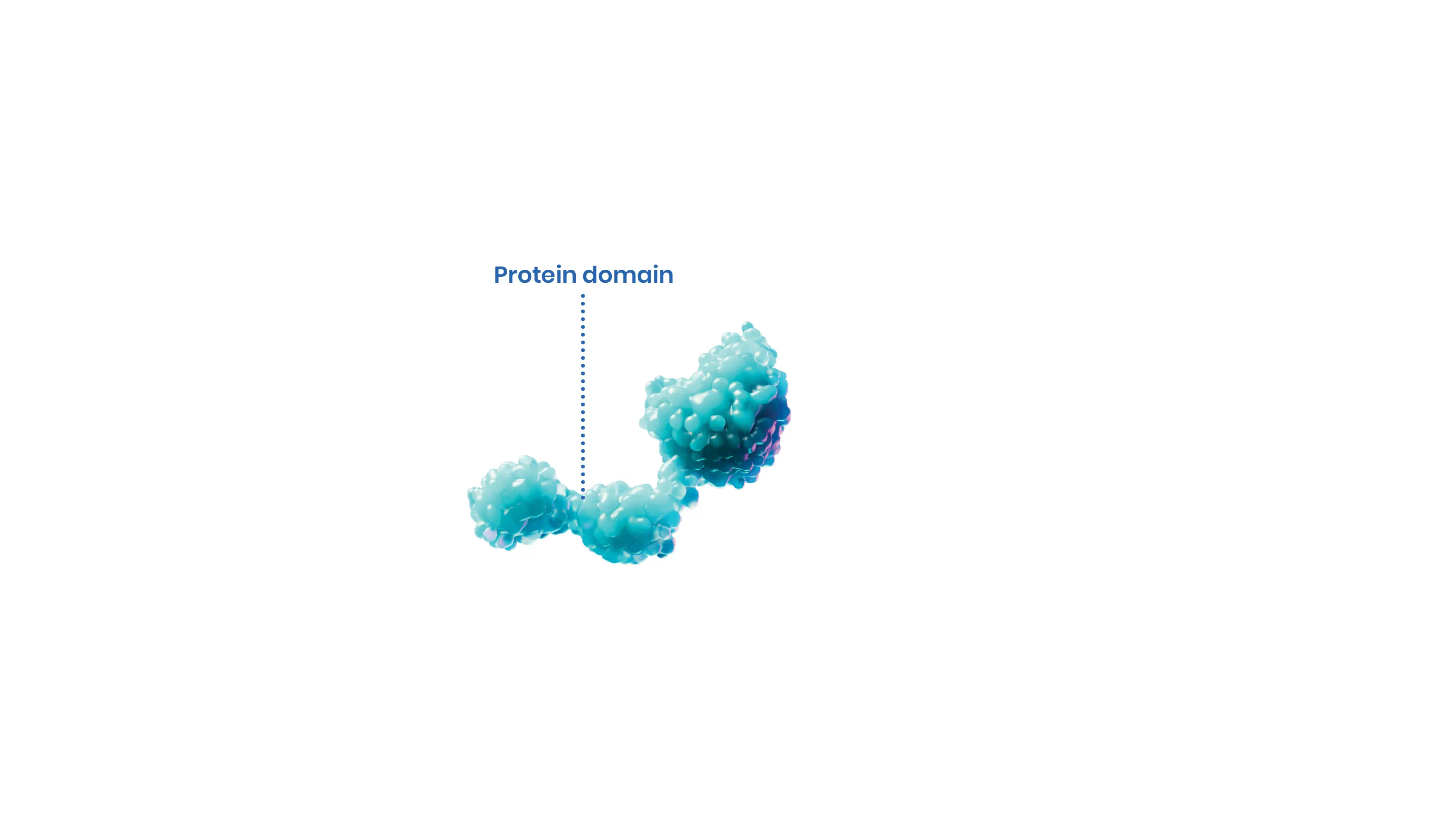
This fusion protein has a protein domain that binds ligands (binding partners).
The protein domain may function as a decoy binding site to attract and capture receptor ligands (binding partners) that would otherwise contribute to disease. An antibody Fc portion may be added as well to enable the fusion protein to stay in the body longer than a circulating receptor would remain on its own.
Antibody-Drug Conjugates (ADCs)
ADCs combine the targeting power of antibodies with payloads that can include chemotherapy designed to kill cancer cells. ADCs deliver potent therapy directly to target cells.
An ADC has chemical linkers, which are designed to tether a chemotherapeutic drug or other payload to the antibody until the ADC reaches its target.
The antigen binding sites on the ADC allow for precise targeting of specific markers on target cells, enabling localized delivery of the therapy.
Once the ADC binds to its target cell, it is internalized. Inside the cell, the drug payload is released so it can act on its target.
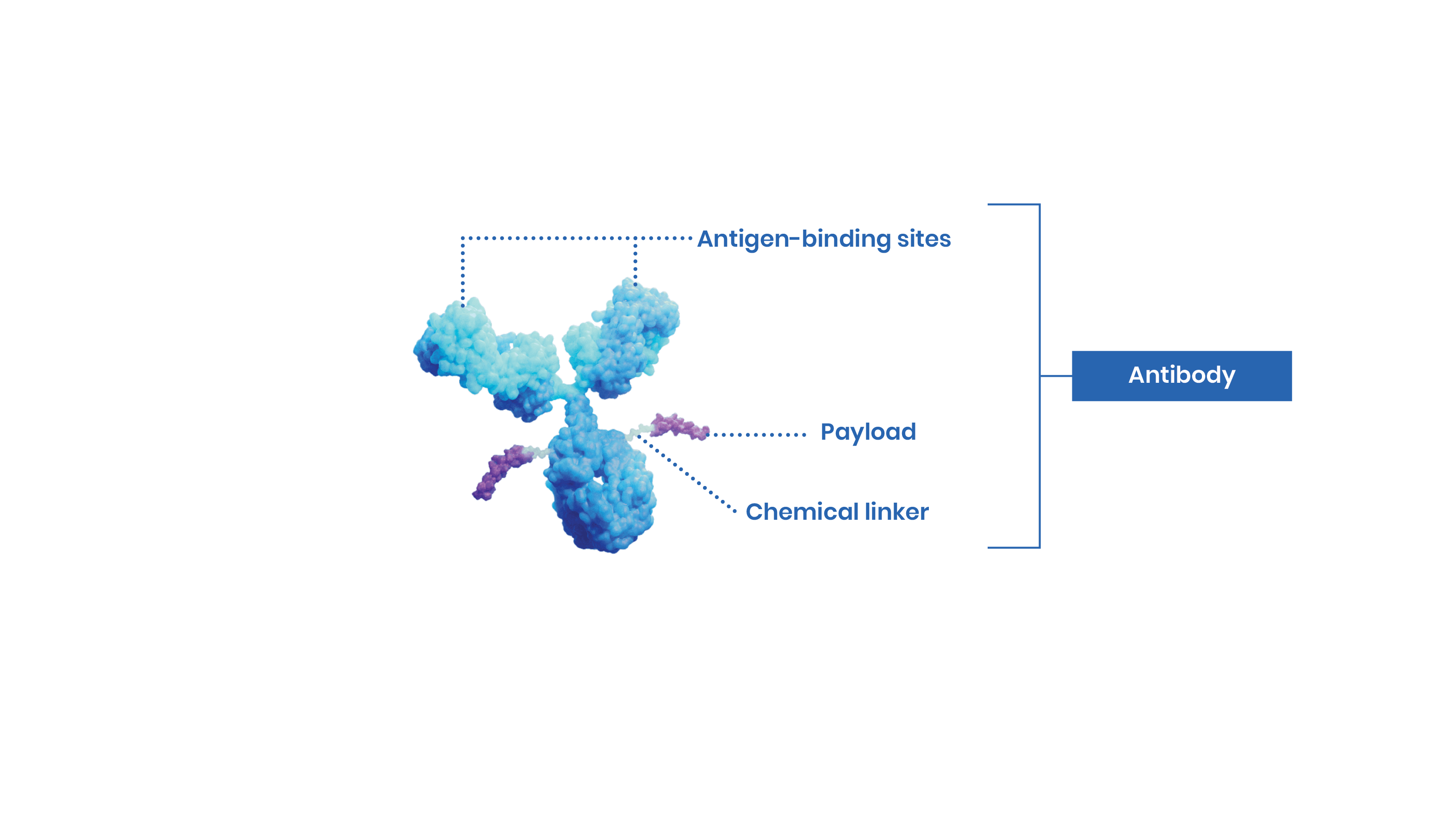
An antibody-drug conjugate has an antibody backbone that targets specific cells, as well as chemical linkers that are designed to link the antibody to its payload.
A variation on this modality is the peptide-antibody conjugate, where instead of the cytotoxic drug, the antibody has peptides attached to it via chemical linkers.
Small interfering RNA (siRNA) Therapeutics
siRNA therapies prevent the production of disease-causing proteins by breaking down the messenger RNA (mRNA) that carries the instructions for protein production. Also known as gene silencing, this technology is based on natural processes that cells use to regulate protein production in the body.
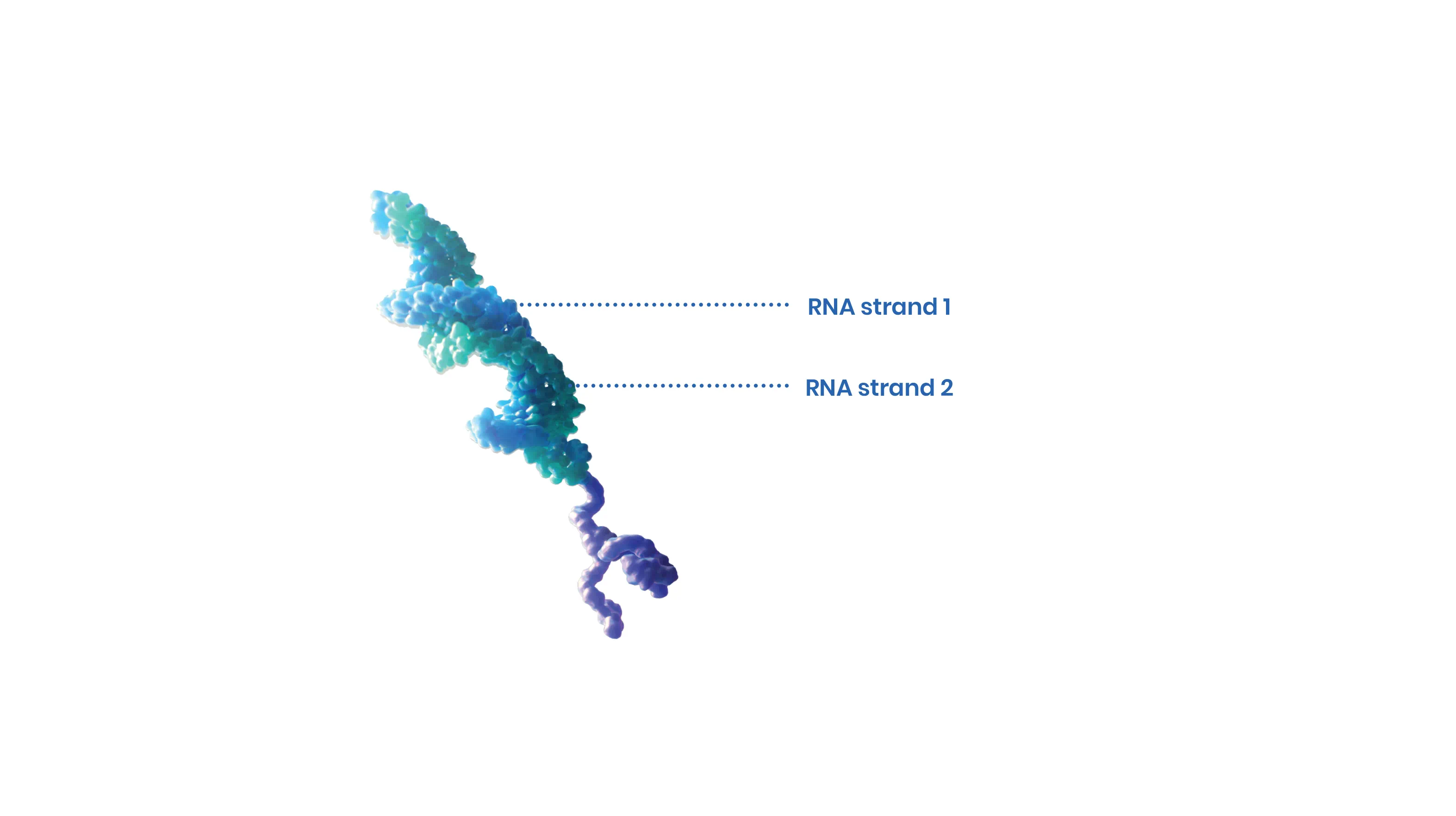
siRNA molecules are made up of two RNA strands that pair with specific mRNA sequences to trigger degradation.
siRNA molecules are composed of two RNA sequence strands that pair with specific mRNA sequences, triggering their degradation and silencing the gene responsible for producing harmful proteins.
A common delivery method is to attach an siRNA sequence to a sugar molecule cluster called tri-GalNAc (Triantennary N-Acetylgalactosamine) that binds to a receptor on liver cells. Upon binding, the siRNA is carried into the cell, enabling it to be processed and seek its target mRNA.
Researchers are exploring other partner molecules that can be conjugated to siRNA molecules to access targets in other types of cells and tissues. These pioneering siRNA programs have the potential to stop harmful proteins before they're made, opening new treatment options for complex diseases.
Small Molecules
Small molecule therapeutics are synthetically derived chemical compounds that can enter and reach targets found within cells,
Small molecules can influence enzyme activity and signaling within cells. And they are small enough that they can cross the blood-brain barrier, targeting cells in the brain.
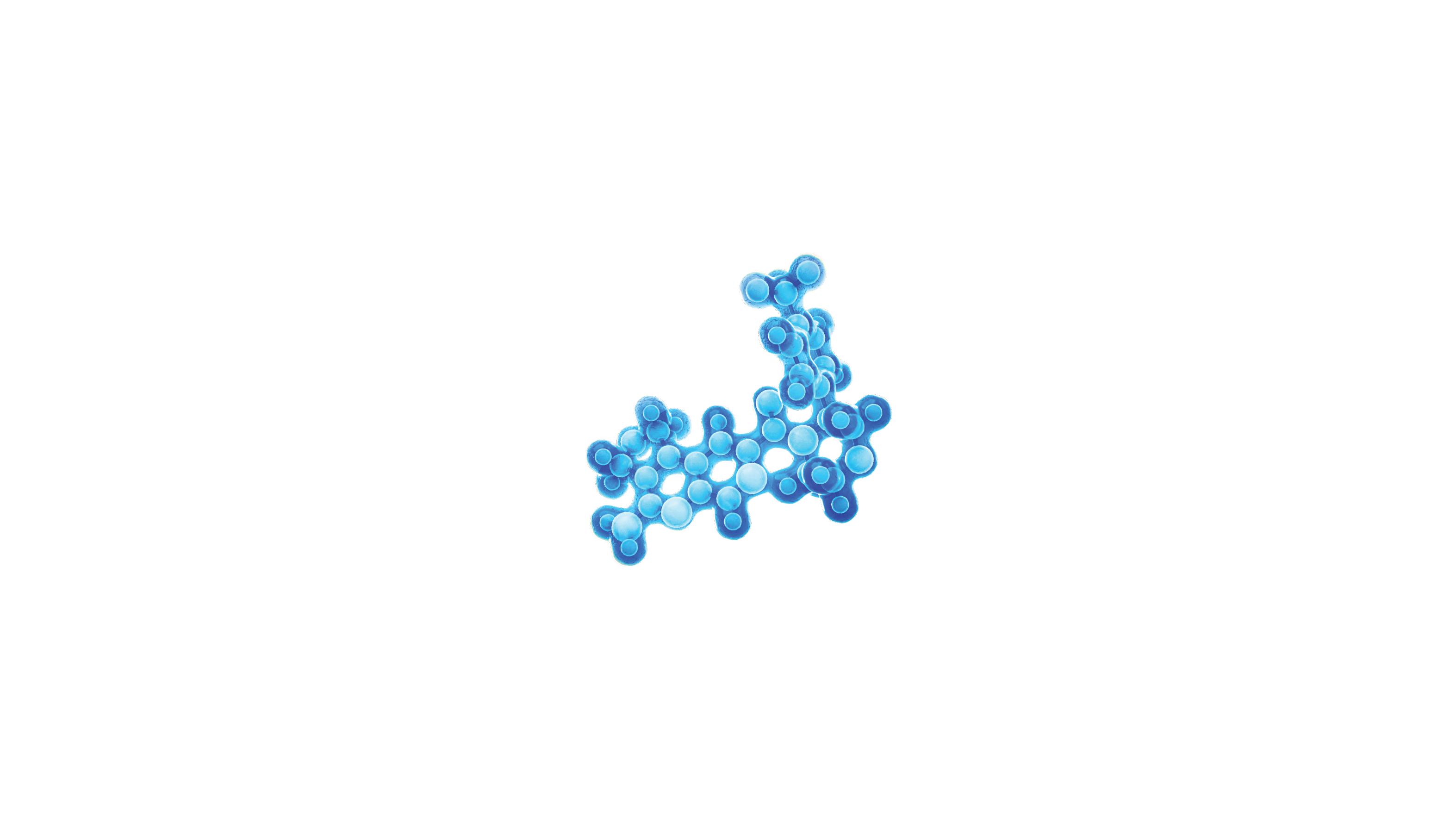
Small molecules are custom-tailored chemical compounds that are generally 1/300th the size of large, protein-based therapeutics such as monoclonal antibodies.
Small molecule drugs are compact, custom-tailored compounds that easily enter cells. This allows for more options to intervene in a wide variety of disease processes – including those that other therapeutics such as larger biologics cannot reach. Small molecules are also typically more convenient for oral delivery in the form of pills or capsules.
Induced Proximity Molecules
Induced proximity molecules such as proteolysis-targeting chimera (PROTAC) molecules take a different approach from traditional drugs. Instead of directly altering a target's activity, they act as matchmakers by inducing proximity between two targets. For example, a PROTAC is typically made up of two small molecules joined with a linker. One of the small molecules binds to a disease protein target, while the other small molecule binds to an enzyme, so that when these are brought together, the enzyme will tag the target for removal by the cell's natural disposal system.
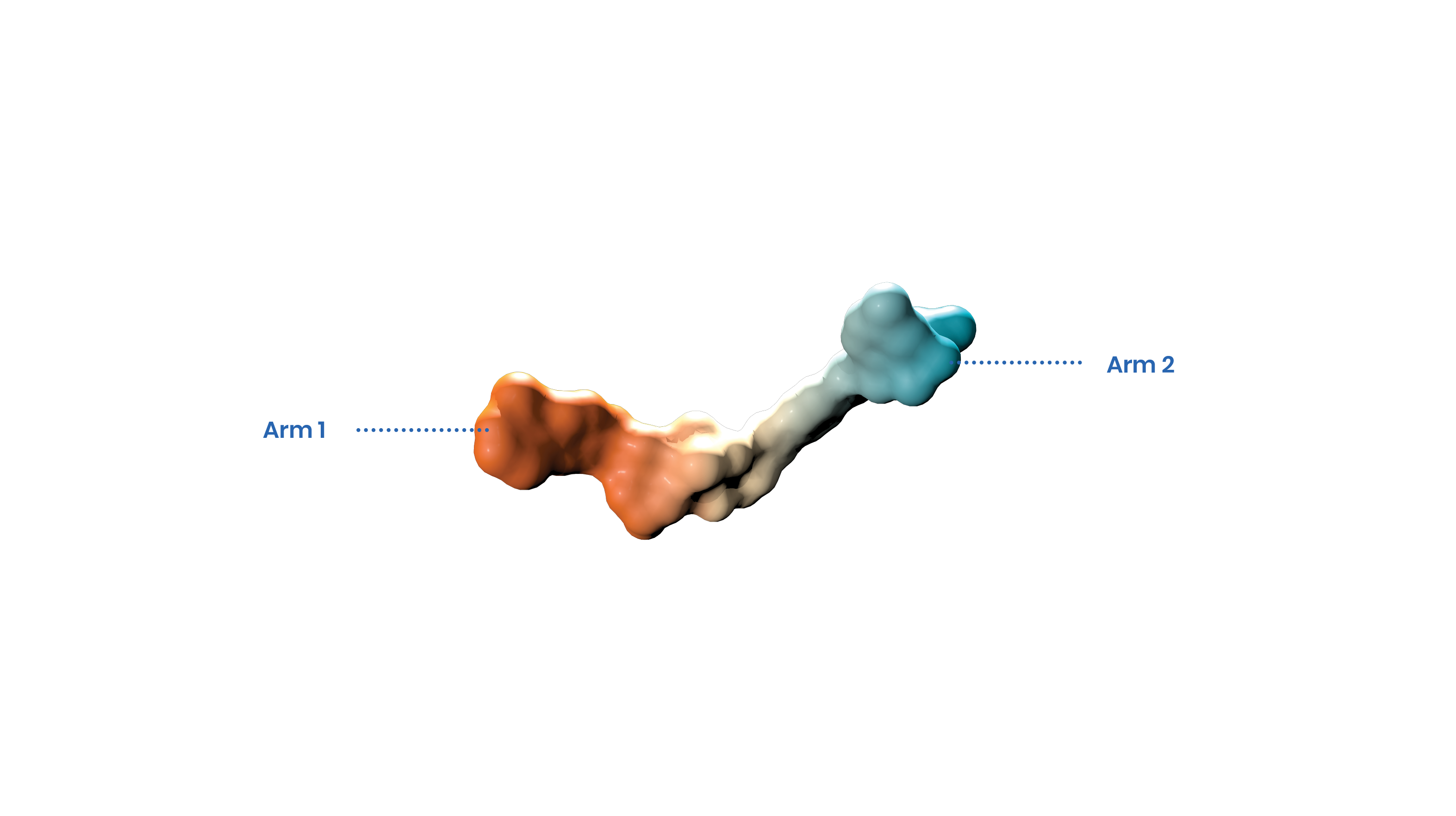
A proteolysis-targeting chimera (PROTAC) molecule typically has one arm made up of one small molecule that binds to a disease target and another small molecule arm that binds an enzyme that tags the target for removal.
A variation on this is a molecular glue, which is a small molecule that is capable of "gluing" the protein target to another molecule, such as a degradation enzyme, to similarly harness the cell's own biological machinery to alter a target and drive a therapeutic effect.
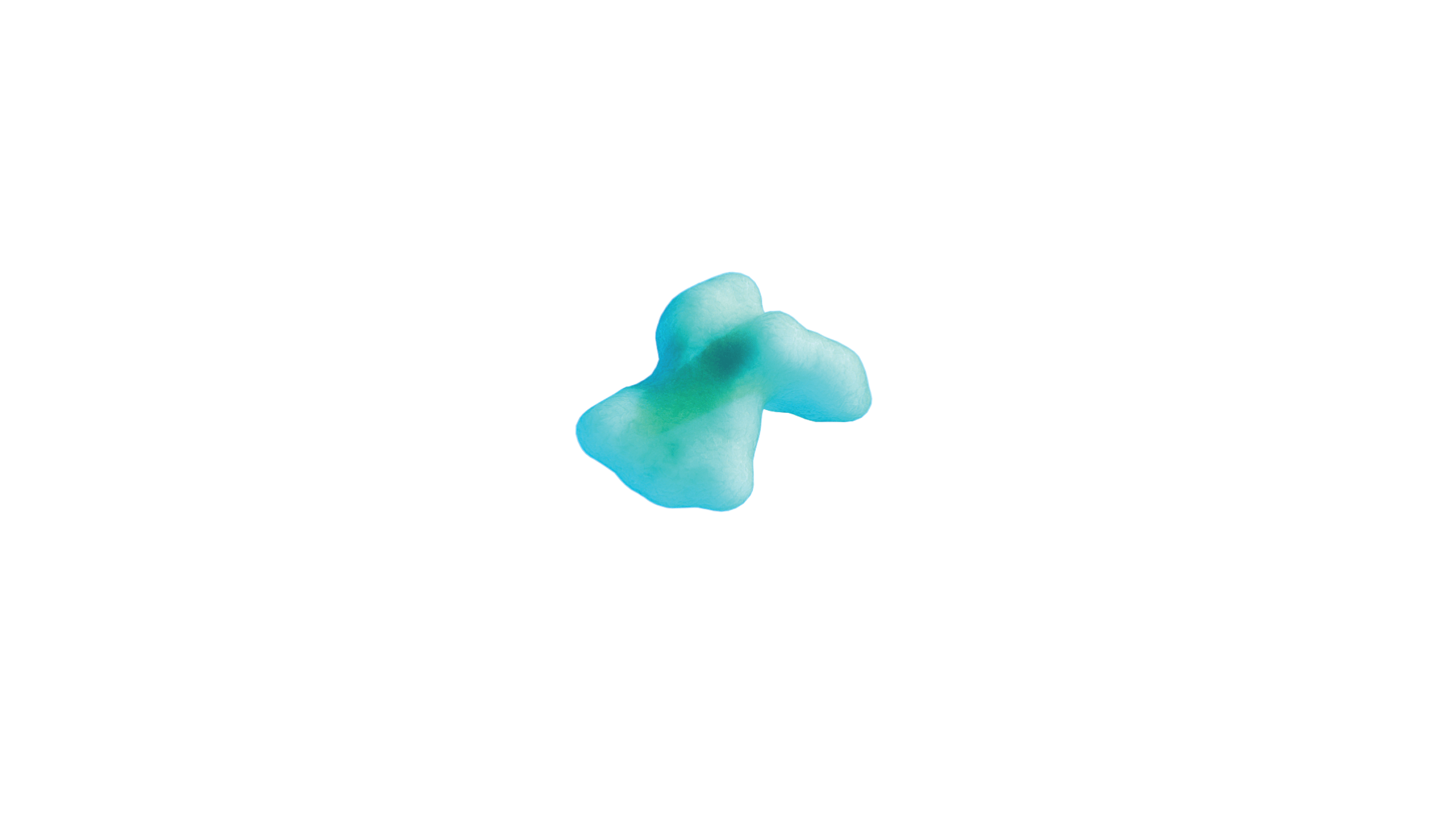
A molecular glue is a small molecule that "glues" a protein target to an enzyme and leads to the target's destruction.
The induced proximity modality has the potential to address diseases where proteins are hard to target because they don't have suitable binding sites to leverage traditional approaches.

